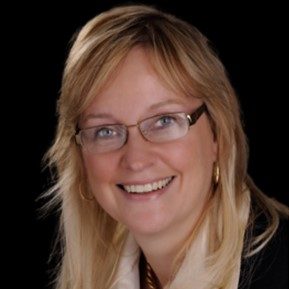What’s Happening Now to Shape Our Future?

September 6, 2022
by Valerie L. Gerard, James Jackson, Carl Chrappa, Diane Croessman, Patricia Voorhees, Rick Remiker and Gary LoMonaco
Monitor 100 2022
The future of equipment financing requires resiliency and innovation. Adapting to economic changes and customers’ evolving needs and building closer stakeholder relationships are key components to maintaining success in the coming future. Alta advisors share their thoughts on what the future can look like for the industry and strategies to get there.
Ten years from now, funding will flow to the most efficient, most flexible and most resilient enterprises that are continuously innovating and adding value to customer solutions. It’s already happening — we see a growing appreciation for consumption-based financing solutions, specialization and advancing technology that goes beyond automation to embedded digital financing and greater use of blockchain. In addition, consumer-friendly digital apps are driving an expectation and demand for commercial buying experiences to be just as swift. Therefore, it is imperative that financing companies fully embrace a digital mindset.
We also expect to see equipment financing businesses outsource many more functions in the next decade while strengthening sales and business development, especially for the more complex transactions that will always require human intervention.
Resilience will be greater due to the agility enabled by new technologies and platforms that secure transactions. And future leaders will have learned from the experience ofworking through the Great Recession, a global pandemic, shifting geographical alliances and the first war in Europe since WWII. Compared to most other business sectors, the equipment finance industry has shown far more resilience and responsiveness to its customers. And those customers will value the qualities that strengthen resilience moving forward.

There is growing appreciation for blockchain’s potential to lower costs, improve execution of transactions, increase transparency and reduce high-volume, paperwork-intensive processes. In fact, it has a far wider use than just keeping financial ledgers. Blockchain has the power to disrupt numerous industries, including the equipment finance industry.
Since we began researching this subject several years ago, blockchain has become even more recognized as a proven technology and is starting to pass muster with lawyers, regulators and rating agencies that were reluctant to accept the unproven nature of this technology. Blockchain provides an immutable and tamper-proof technology platform that will have many potential applications and will replace antiquated practices. It’s the perfect solution for digitizing expensive, opaque and inefficient processes that are laden with manually intensive procedures dependent on Excel spreadsheets and gobs of printed loan documents. Blockchain can increase efficiencies via streamlined processes, reduced costs, faster processing times and enhanced transparency and trusted data. For that reason, we are already seeing some service providers incorporate blockchain in emerging products.
One of the applications that excites us is blockchain-enabled securitizations. The entire securitization process will become much more efficient, bring greater transparency around equipment performance, reduce issuance costs and ultimately result in better pricing. That could be a game changer for independents, as it may narrow their cost of funds disadvantage relative to bank-owned companies. We expect that blockchain-enabled securitizations will start with more homogenous asset classes such as mortgages and credit cards before embracing equipment-backed deals. We expect to see this in our industry in the next five years.
In addition, KYC (know-your-customer) and AML (anti-money-laundering) applications could use blockchain technology to streamline regulatory processes. Similarly, UCC filing burdens could be reduced, and the exchange of payments could be made with more security and less need for third-party verifications.
In addition to blockchain, increasing digital automation and outsourcing of business functions will continue to drive efficiency to a point that will alter not only the industry’s composition, but also the types of capabilities and talents needed within organizations.
Businesses also are reorganizing to accommodate more consumption finance transactions. Managed services contracts that bundle hardware and services together will continue to gain momentum over time. These models, when combined with usage versus ownership options, provide end users with more efficient utilization of resources. Today, there are multiple enablers that facilitate and encourage more rapid adoption of these models.
Boosting consumption options are ESG (environmental, social, governance) mandates and IoT-enabled devices that improve the monitoring of key metrics, as well as artificial intelligence for predictive analytics. New asset classes will emerge with a greater focus on sustainability.
Today, we can point to numerous examples of usage models, such as transportation assets measured by the mile, construction assets measured by metric ton moved, energy assets measured by KW hours and healthcare assets measured on a per-diagnostic basis. Most often, these current programs include a variable component plus a fixed payment minimum. Going forward, the expectation is that improved performance predictability will eventually support more sophisticated contract flexibilities and usage options. This is a future that will depend less on single users and more on predictable shared use or reuse strategies and will continue to improve the alignment of costs with meaningful and measurable outputs.
When Generation Z executives take the helm in the coming decade, they will bring their passion for preserving the environment and climate change. Gen Zers are inclusive and progressive in nature. Similarly, they strongly believe in corporate social responsibility and diversity and inclusion initiatives. Being considerate of the environment is one of their top passions.
Looking ahead, businesses will need to consider what the ideal mix of employees will be and how to attract the right talent. Gen Zers, the first digital native generation, seem to bring their full selves to work, and they expect companies to take a stand on societal issues. Their interest in remote work options makes them available based on their special talents rather than their physical location. This desire, of course, has been intensified during the pandemic, which has expanded the opportunity to work virtually.
Looking back a decade, fintech was feared to be a major disrupter, but the reality was that it mostly expanded small business consumer lending. What evolved in commercial finance are new networks of lenders operating within ecommerce ecosystems. Networks of lenders can make the match between buyer and financing sources in minutes with machine learning or artificial intelligence capabilities. This trend will pressure exclusive vendors to add more to their end-user offerings, while OEMs will simply enjoy easier access to financing.
Automation also will help large middle-ticket and big-ticket financing in some aspects of business, but this sector will continue to need humans to manage risk. The fear that automation would reduce jobs has not been realized. In fact, the industry currently has many jobs to fill.
The banking sector will likely contract to the point where the United States’ top banks and smallest banks dominate in equipment finance, leaving a dearth between large and small lenders. Ten years ahead, financing companies now owned by midsized banks, most of them regional, likely will have found a larger bank partner or will have developed their own bank funding resources.
Specialist Finance Company
There will be a greater demand for specialists in addition to the evergreen need for sales and business development professionals.
The generalist finance company will eventually give way to the specialist finance company. It will become cost prohibitive for a finance entity to provide all the traditional back-office services such as customer service, collections, documentation and asset management.
Much like the automotive repair and medical industries, companies will specialize in certain segments of the market and focus their efforts on competitive enabling of functions such as business development and transaction structuring and pricing. The back-office commodity services mentioned above will be outsourced to companies that specialize in these specific functional areas and provide these services to multiple players in the industry. By focusing on these areas, outsource companies will gain economies of scale and be able to provide the service at a fraction of the cost of each individual finance company, thus making the entire industry more efficient and profitable.
While specializing and pooling of resources have been ongoing trends for the past two decades, they will continue to accelerate as companies seek every avenue to reduce the cost of doing business.
An Uncertain Future
Ten years ago, we were talking about commoditization and compression and those easily foreseeable trends played out. We also were talking about fintech for the first time as we entered the economic recovery following the Great Recession. However, no one predicted we would go this long without an economic crash. Now, in 2022, we are almost 15 years into recovery with mostly unscathed credit quality.
Regulations were tightened and banks have fine-tuned operations through stress tests. Increased use of data and greater transparency also are contributing to resilience. These factors may lessen the impact of future events that can’t be known in advance using predictive analytics or traditional forecasting.
Another decade of uninterrupted growth is not likely even with the industry’s focus on business-essential assets and development of more efficient, modernized business practices.
In preparing for the uncertain future, the industry should continue to build closer relationships with customers and other stakeholders, institutionalize what has been learned during the pandemic and design flexible solutions and agile workplace cultures that will retain talent and improve customer experiences. The possible ways of doing this are endless.
Nothing is certain, the adage goes, but death and taxes — and, we would add, the creativity and resilience of the equipment finance sector as it continues to innovate and adapt to the changing needs of customers.
About the authors: Valerie L. Gerard and James Jackson are co-CEOs; Carl Chrappa is senior managing director; Diane Croessmann, Patricia Voorhees and Gary LoMonaco are directors; and Rick Remiker is vice chairman of The Alta Group.
Get Alta Insights,
written by our advisors delivered to your inbox.
By submitting this form, you are consenting to receive marketing emails from: The Alta Group. You can revoke your consent to receive emails at any time by using the SafeUnsubscribe® link, found at the bottom of every email. Emails are serviced by Constant Contact